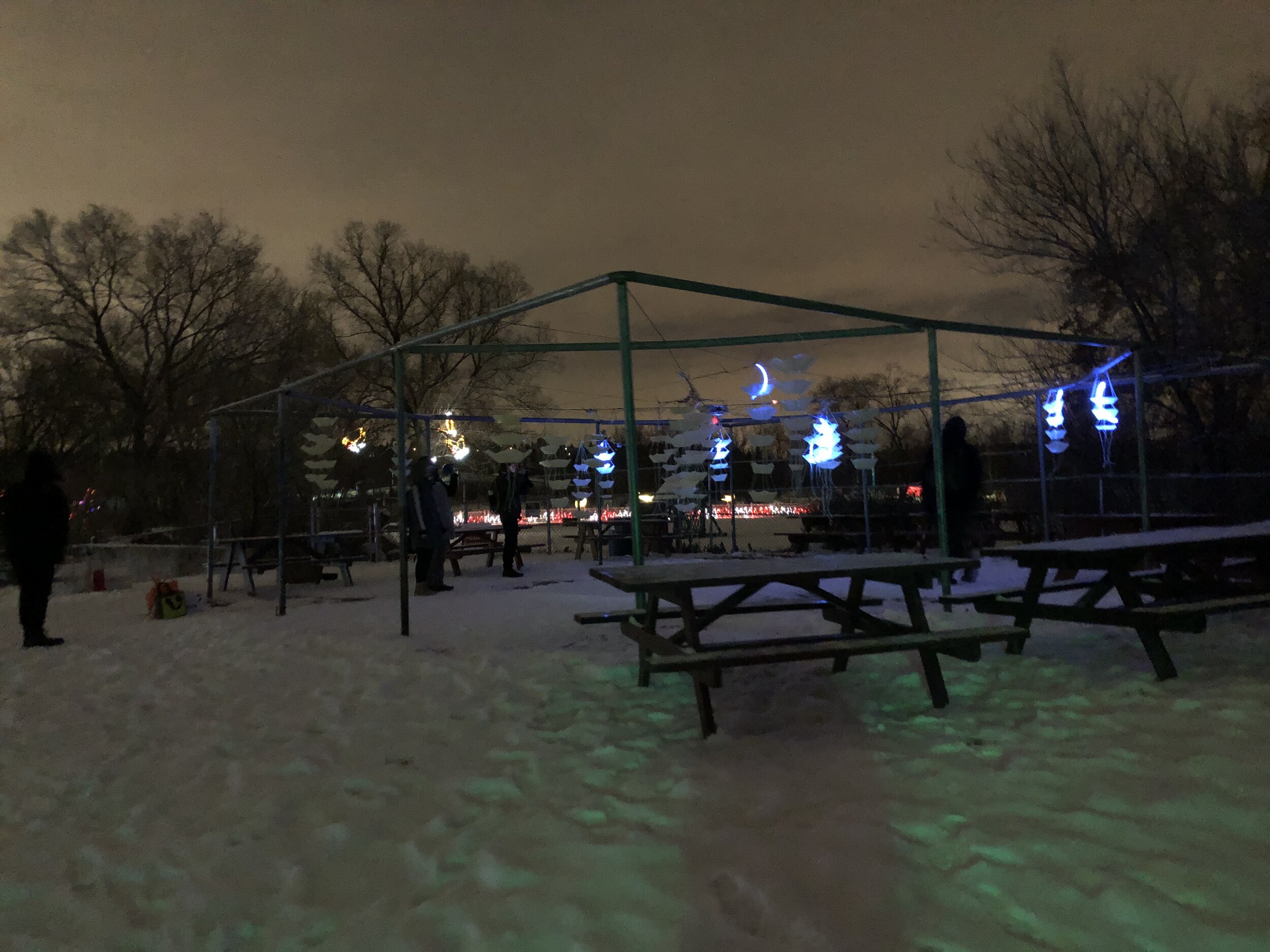Robotic Fabrication Fall 2019
I’m looking forward to the final reviews for EVDS 683L07: Introduction to Robotic Fabrication Course this week. The students built 3 installations for the Zoominescence festival of lights at the Edmonton Zoo. The original concept designs for the 3 projects were developed over the summer by the lab for integrative design (integrativedesign.org), submitted to a design competition and chosen by a jury. At the beginning of the fall semester, I asked my robotic fabrication students to form teams and use these concept designs as jumping off points. They spent the first half of the semester learning about industrial robot programming, producing machine codes using Grasshopper plugins and programming arduinos, while they redesigned and planned out the fabrication of their projects. They then spent the second half of the semester producing prototypes and final exhibition ready installations. You can read more about the projects and the artists involved at https://www.instagram.com/p/B5lJ6M7Bz-K/. In the final review, the students will present documentation of their projects and discuss what they learned about architectural robotics through the design-build process to a panel.
Each project involved large-scale fabrication using industrial equipment. Textura used Robotic Hot Wire Cutting (RHWC) to create textured panels from blocks of EPS foam. Meridiem explored various large-scale 3d printing techniques using an industrial robot arm fitted with a pellet extruder. Float employed a large scale 3d printer and a mass-customizable design system to print multi-component assemblies with integral tubes used to pass cables for hanging.
This semester’s version of the course was super ambitious - we all worked really hard. The course would never have worked without the tireless dedication of the TA, Kim Tse. I hope the students were happy with their work and feel that it was worth the effort. A lot of the students are international students and haven’t had much exposure to Canadian winters. Our install day was a pretty extreme introduction.
The concept for the course is that collaborative design and making activities leveraging computation and digital fabrication allow participants to learn about robot programming in a hands-on manner. The course explores the development of tools and techniques for the production of architectural prototypes. Software including Rhino, Grasshopper, RoboDK and Robotstudio are used to control Universal UR10-E and ABB IRB2600 Industrial Robots. The students develop end-of-arm tooling, toolpaths, simulations, digital outputs and other processes necessary for the production of their projects. The students are expected to develop exhibition-ready 1:1 prototypes, documentation of the tools, techniques and processes developed, and speculation about the future uses for these techniques.




